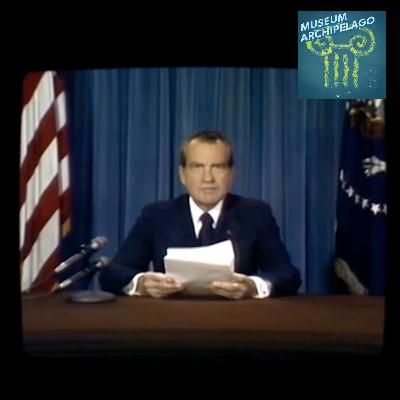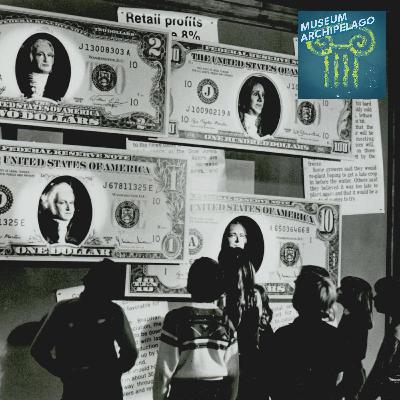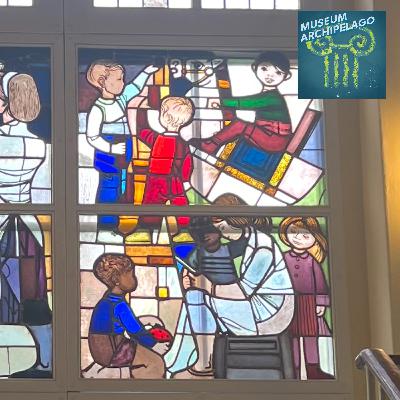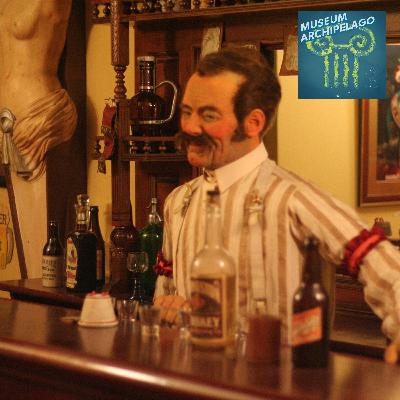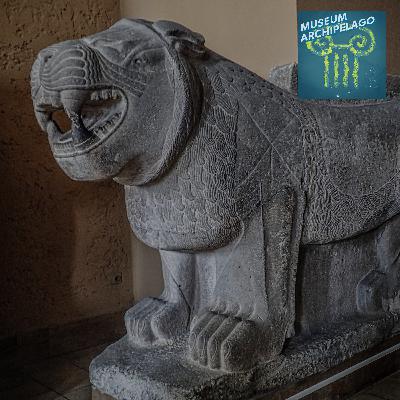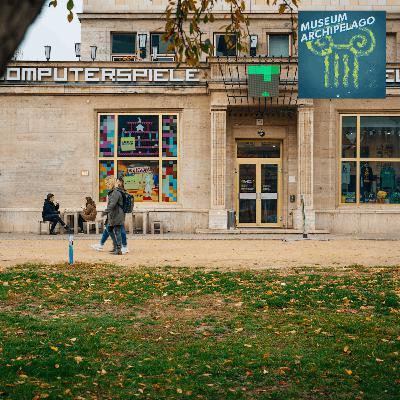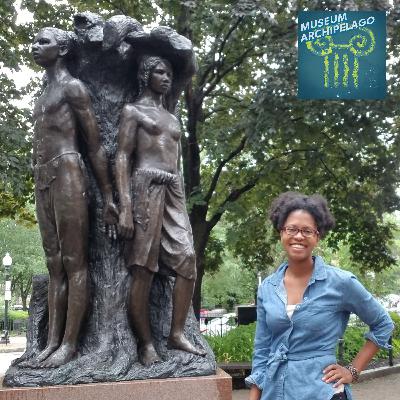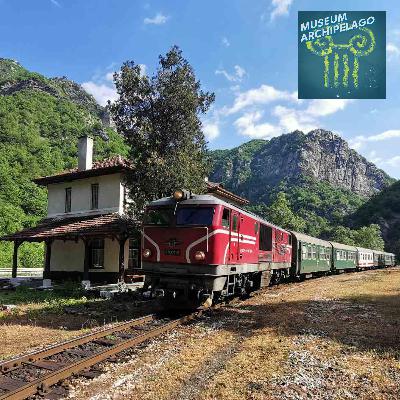97. Richard Nixon Hoped to Never Say These Words about Apollo 11. In A New Exhibit, He Does.
Description
As the Apollo 11 astronauts hurtled towards the moon on July 18th, 1969, members of the Nixon administration realized they should probably make a contingency plan. If the astronauts didn’t make it – or, even more horrible, if they made it to the moon and crashed and had no way to get back to earth – Richard Nixon would have to address the nation. That haunting speech was written but fortunately was never delivered.
But you can go to the Museum of the Moving Image in New York City and watch Nixon somberly reciting those words. It looks like real historic footage, but it’s fake. Artists Francesca Panetta and Halsey Burgund used the text of the original address and media manipulation techniques like machine learning to create the synthetic Nixon for a film called In Event of Moon Disaster. It anchors an exhibit called Deepfake: Unstable Evidence on Screen.
In this episode, Panetta and Burgund discuss how they created In Event of Moon Disaster as a way to highlight various misinformation techniques, the changing literacy of the general public towards media manipulation, and the effectiveness of misinformation in the museum medium.
Topics and Notes
- 00:00 Intro
- 00:15 July 18th, 1969
- 00:40 The Safire Memo
- 01:38 Clip From In Event of Moon Disaster
- 02:30 Nixon’s Telephone Call
- 03:00 What is Deepfake?
- 03:30 Halsey Burgund
- 04:06 Francesca Panetta
- 04:30 How They Did It
- 04:50 Why This Speech?
- 06:02 Deepfake: Unstable Evidence on Screen at the Museum of the Moving Image in New York City
- 07:05 Misinformation By Editing
- 09:53 Misinformation and Medium
- 10:23 Museums as Trustworthy Institutions
- 11:27 What Would a “Deepfake Museum Gallery” Look Like?
- 13:43 In Event of Moon Disaster
- 14:00 Outro | Join Club Archipelago 🏖
Museum Archipelago is a tiny show guiding you through the rocky landscape of museums. Subscribe to the podcast via Apple Podcasts, Google Podcasts, Overcast, Spotify, or even email to never miss an episode.
Support Museum Archipelago🏖️
- Access to a private podcast that guides you further behind the scenes of museums. Hear interviews, observations, and reviews that don’t make it into the main show;
- Archipelago at the Movies 🎟️, a bonus bad-movie podcast exclusively featuring movies that take place at museums;
- Logo stickers, pins and other extras, mailed straight to your door;
- A warm feeling knowing you’re supporting the podcast.
Transcript
Below is a transcript of Museum Archipelago episode 97. For more information on the people and ideas in the episode, refer to the links above.
<input class="toggle" id="collapsible" type="checkbox" />
<label class="lbl-toggle" for="collapsible">View Transcript</label>
Welcome to Museum Archipelago. I'm Ian Elsner. Museum Archipelago guides you through the rocky landscape of museums. Each episode is never longer than 15 minutes, so let's get started.
On July 18th, 1969, members of the Nixon administration realized they should probably make a contingency plan. If the Apollo 11 astronauts who were hurtling towards the moon, on their way to be the first humans to land on its surface, didn’t make it to the moon – or, even more horrible, if they made it to the moon and crashed and had no way to get back to earth – Nixon would have to address the nation.
So Nixon’s speech writer, William Safire wrote an address titled “In Event of Moon Disaster.” It’s a short, haunting speech – the first time that billions of people on earth would learn about the failed Apollo 11 mission. Safire notes that before delivering the speech, Nixon “should telephone each of the widows-to-be.” Widows-to-be because Neil Armstrong and Buzz Aldrin wouldn’t be dead yet, just stranded on the moon with no hope of recovery.
Halsey Burgund: The astronauts are still alive. I mean that – every time I even think of that, I just get these sort of chills. They not only would have been alive when the speech was delivered, but they could have actually heard it.
Then, back on earth, Nixon would have soberly walked up to a television camera, adjusted the speech written on his stack of papers, looked right at the camera lens and said.
Richard Nixon: “Good evening my fellow Americans. Fate has ordained that the men who went to the moon to explore in peace will stay on the moon to rest in peace. These brave men, Neil Armstrong and Edwin Aldrin, know that there's no hope for their recovery. But they also know that there is hope for mankind in their sacrifice.”
But Nixon never said these words. On July 20th, 1969, Apollo 11’s lunar lander successfully touched down, intact on the surface of the moon with enough fuel to get safely back to earth. So instead of addressing the nation in a sobering speech, Nixon called the astronauts directly in a more awkward but definitely preferable phone call.
Richard Nixon: “Hello Neil and Buzz, I’m talking to you by telephone from the Oval Room at the White House, And there certainly has to be the most historic telephone call I've ever made. I just can't tell you how proud we all are of what you have – every American, this has to be the proudest day of our lives.”
The reason why it’s so hard to tell these two Nixons apart – the real one and the fake one – is because of a technology known today as deepfake.
Halsey Burgund: Deepfake comes from the combination of deep, which is short for deep learning in this case, which is an artificial intelligence technique, and then fake, of course, meaning, you know, something not true. So deepfake is a representation through audio and video of an event, of a person, doing or saying something that never actually happened in reality. And the addendum to that is that it almost always happens without the consent of the individual who is depicted.
The first Nixon, the fake one, was created by Halsey Burgund and Francesca Panetta as part of a film they titled In Event of Moon Disaster. In Event of Moon Disaster is the centerpiece of a new exhibit called Deepfake: Unstable Evidence on Screen at the Museum of the Moving Image in New York City.
Halsey Burgund: Hello. My name is Halsy Burgund. I am an artist and a creative technologist, and one of my most recent projects is called In Event of Moon Disaster, which looks at a deepfake synthetic media technology. And it uses the Apollo 11 moon landing mission as a vehicle to explore this new technology.
Francesca Panetta: Hello, my name is Francesca Panetta. I am an immersive director, artist and journalist, and I am the co-director of In Event of Moon Disaster, a film and an installation about misinformation and deep fakes and an alternative history of the moon landing.
Panetta and Burgund made In the Event of Moon Disaster by combining footage of Richard Nixon giving an unrelated speech and employing video techniques to replicate the movement of Nixon’s mouth and lips. Combined with the contributions of a voice actor and some deep learning techniques to synthetically make the audio sound more like Nixon, the whole video is quite believable and striking.
Halsey Burgund: We've thought a lot about how our project needs to create misinformation to a certain extent, but then it needs to identify what it has done. We need to wrap the whole project in a context, which does the best we can to ensure that people don't leave the experience thinking that two astronauts were stranded on the moon and their bodies are still there and they, and they died. That is the context of our piece. And that is what the speech that Nixon delivers – fake Nixon, synthetic Nixon delivers.
The directors choose to use this particular speech by Nixon for the project in part because it relates to moon

